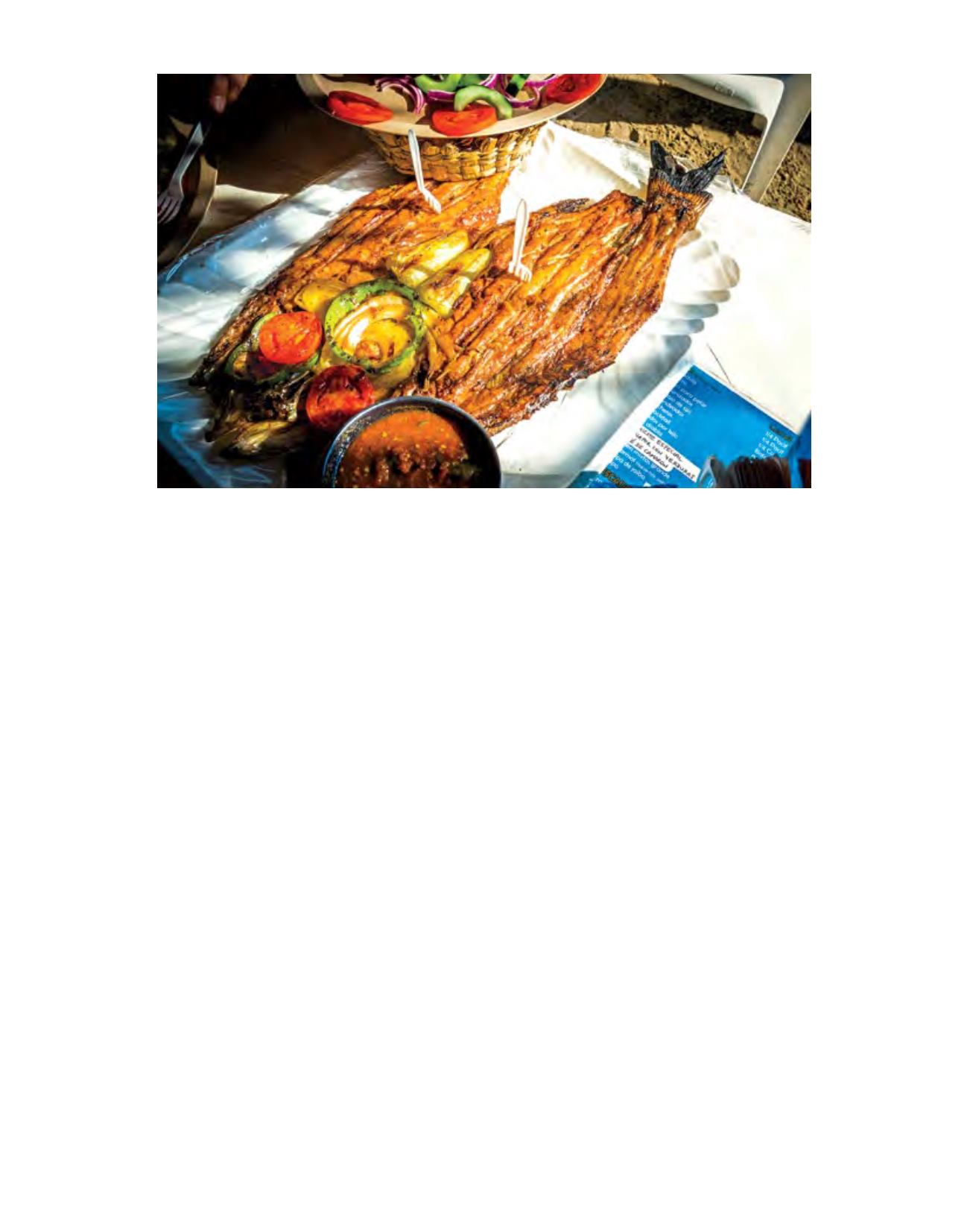
 intervalworld.com
intervalworld.com
INTERVAL WORLD
■
Issue 2, 2019
27
BAJA CALIFORNIA: EVERYTHING UNDER THE OCEAN
With about 2,000 miles of coastline, it’s no wonder that the Baja
California Peninsula is known for seafood— from its famous batter-fried
fish tacos to octopus tostadas.
Dig deeper and you’ll find towns that stand out for a particular culi-
nary specialty. Puerto Nuevo, just 20 minutes south of Rosarito Beach
in North Baja, is Mexico’s lobster capital. Here, you can feast on suc-
culent, buttery lobster, typically fried and served with rice, beans, and
tortillas. The town hosts an annual lobster festival in October to mark
the beginning of the harvesting season.
In South Baja, Loreto is one of the only places in the world where,
due to strict export regulations, you can get
almejas chocolatas
— a
type of clam that can reach up to 6 inches in width. On the southern-
most tip of the peninsula, Los Cabos is a world-renowned destination
for catching — and eating — fish. There are about 900 species in the
waters around Cabo San Lucas and San José del Cabo, and there are
a number of restaurants where you can take your catch of the day and
have a meal prepared with it.
Another unique aspect to Baja cuisine: Its microclimate allows for
wine grapes to thrive in the region. Referred to as Mexico’s own Napa
Valley, the Valle de Guadalupe wine country is only about an hour drive
from Rosarito Beach. Book a tour to visit some of the wineries along La
Ruta del Vino wine route and take home a bottle of red.
NAYARIT: SUN, SAND, AND SEA
Nestled between the Sierra Madre mountains and the Pacific Ocean,
Riviera Nayarit is known for its incredible seaside cuisine with beachy
flair. Thanks to its fertile soils and tropical climate, Nayarit is one of the
few places where you can drink straight from a coconut while eating
shrimp tamales — a local twist on a national dish.
PESCADO ZARANDEADO
Carlosrojas20/Getty Images; Matt Mawson/Getty Images
exico’s prosperous culinary history began more than 9,000 years ago with the Mayans
and Aztecs cultivating corn, beans, and chile peppers. These ancient customs evolved
when the Spaniards, along with other civilizations, arrived with new ingredients (such as meat
and dairy) and influenced the tribes’ local diet, resulting in the considerably different provincial
dishes across the country.
Today, Mexico’s gastronomy is as varied as its landscapes — an infusion of flavors carrying
traces of its indigenous heritage, which can’t be paralleled. So much so that Mexican cuisine
was recognized in 2010 by UNESCO when it was added to its Representative List of the Intangible
Cultural Heritage of Humanity. Here, we give you a taste of Mexico’s most prominent regional
cuisines for the next time Interval takes you south of the U.S. border.
M


















